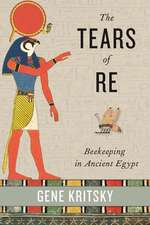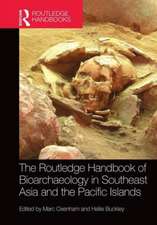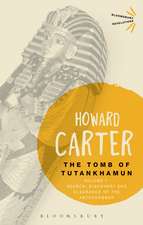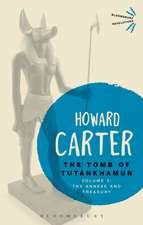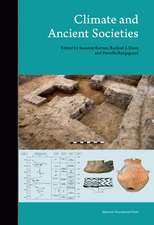Power and Gender in Oneota Culture: A Study of a Late Prehistoric People
Autor Thomas Edward Berresen Limba Engleză Paperback – 2001
Examining the traces left by inhabitants of prehistoric Illinois, archaeologist Thomas Berres finds a society without hierarchy, whose patterns of daily life were shaped by deeply held religious beliefs and traditions. Recognizing that symbols on artifacts left by the Oneota people reveal much about their understanding of the world, Berres analyzes these symbols and challenges commonly held assumptions about early Native American culture. He finds, for example, that the Oneota conceived of power as a means of accomplishment rather than as a way to control others and that the roles of men and women were well defined but parallel. His findings carry important new implications for understanding the role of women in Native American culture.
Berres recreates the values and cosmologies of the Oneota communities by closely examining all aspects of Oneota life and death, from food preparation to burial. His discussion of the thunderbird and Oneota mortuary practices, in particular, helps to capture the beliefs in the supernatural that were a vital part of life for these people. Archaeologists and readers interested in Native American history and culture will find fresh insights in Power and Gender in Oneota Culture.
Berres recreates the values and cosmologies of the Oneota communities by closely examining all aspects of Oneota life and death, from food preparation to burial. His discussion of the thunderbird and Oneota mortuary practices, in particular, helps to capture the beliefs in the supernatural that were a vital part of life for these people. Archaeologists and readers interested in Native American history and culture will find fresh insights in Power and Gender in Oneota Culture.
Preț: 353.68 lei
Nou
Puncte Express: 531
Preț estimativ în valută:
67.68€ • 69.82$ • 56.48£
67.68€ • 69.82$ • 56.48£
Carte tipărită la comandă
Livrare economică 26 martie-09 aprilie
Preluare comenzi: 021 569.72.76
Specificații
ISBN-13: 9780875805870
ISBN-10: 0875805876
Pagini: 265
Dimensiuni: 152 x 229 x 18 mm
Greutate: 0.4 kg
Ediția:1
Editura: Northern Illinois University Press
Colecția Northern Illinois University Press
ISBN-10: 0875805876
Pagini: 265
Dimensiuni: 152 x 229 x 18 mm
Greutate: 0.4 kg
Ediția:1
Editura: Northern Illinois University Press
Colecția Northern Illinois University Press
Recenzii
"Power relations were vital parts of Native American traditions.... They provided a means of renewing time and reaffirming life in culture, a sharing of the whole sacred drama of life."—from Power and Gender in Oneota Culture
Notă biografică
Thomas Edward Berres is Assistant Professor of Anthropology at Northern Illinois University.
Cuprins
Table of Contents
List of Tables and Figures
Acknowledgments
1. Interpreting Oneota
2. Cultural Comparisons: Historical Reality
3. The Prairie Peninsula Country
4. Archaeology of the Middle Rock River
5. Animal Exploitation and Consumption
6. Ceramic Vessels: Vehicles of Communication
7. Thunderbird Symbolism and Material Culture
8. Migration and the Power of Mortuary Ritual
9. The Story of Community, Tradition, and Dreams
References Cited
Index
Acknowledgments
1. Interpreting Oneota
2. Cultural Comparisons: Historical Reality
3. The Prairie Peninsula Country
4. Archaeology of the Middle Rock River
5. Animal Exploitation and Consumption
6. Ceramic Vessels: Vehicles of Communication
7. Thunderbird Symbolism and Material Culture
8. Migration and the Power of Mortuary Ritual
9. The Story of Community, Tradition, and Dreams
References Cited
Index
Descriere
Examining the traces left by inhabitants of prehistoric Illinois, archaeologist Thomas Berres finds a society without hierarchy, whose patterns of daily life were shaped by deeply held religious beliefs and traditions. Recognizing that symbols on artifacts left by the Oneota people reveal much about their understanding of the world, Berres analyzes these symbols and challenges commonly held assumptions about early Native American culture. He finds, for example, that the Oneota conceived of power as a means of accomplishment rather than as a way to control others and that the roles of men and women were well defined but parallel. His findings carry important new implications for understanding the role of women in Native American culture.
Berres recreates the values and cosmologies of the Oneota communities by closely examining all aspects of Oneota life and death, from food preparation to burial. His discussion of the thunderbird and Oneota mortuary practices, in particular, helps to capture the beliefs in the supernatural that were a vital part of life for these people. Archaeologists and readers interested in Native American history and culture will find fresh insights in Power and Gender in Oneota Culture.
Berres recreates the values and cosmologies of the Oneota communities by closely examining all aspects of Oneota life and death, from food preparation to burial. His discussion of the thunderbird and Oneota mortuary practices, in particular, helps to capture the beliefs in the supernatural that were a vital part of life for these people. Archaeologists and readers interested in Native American history and culture will find fresh insights in Power and Gender in Oneota Culture.


